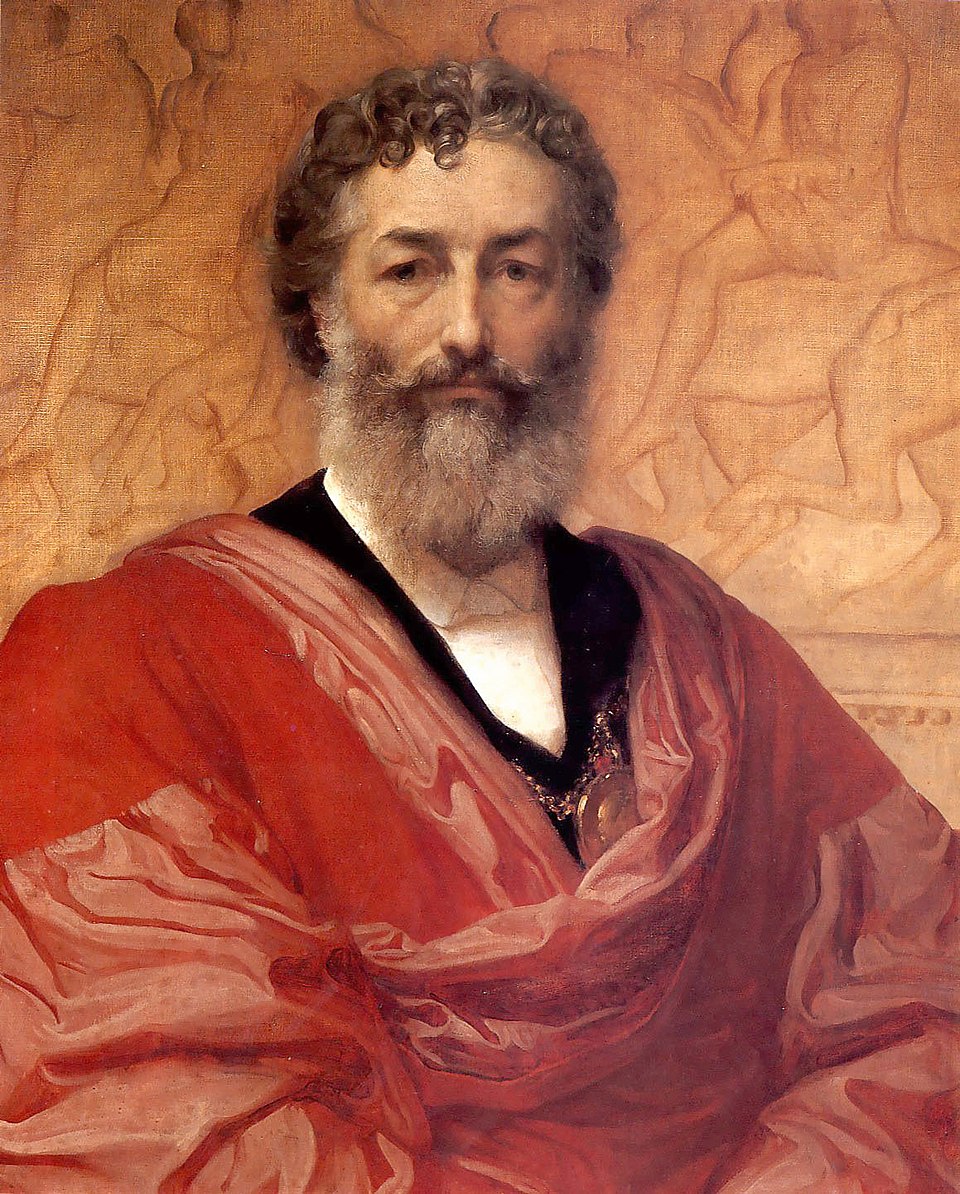

Frederic Leighton was born on December 3, 1830, in Scarborough, England, into a well-to-do family. His father, Dr. Frederic Septimus Leighton, was a physician, and his mother, Augusta Susan Nash, came from a family with literary connections. Leighton’s early life was marked by extensive travel across Europe, living in cities such as Frankfurt, Berlin, and Florence. These experiences exposed him to a rich cultural education and nurtured his early passion for art, as he often sketched classical architecture and Renaissance paintings.
Leighton’s formal art education began at the University of Frankfurt, where he studied under Eduard von Steinle. His talent soon led him to Rome, the epicenter of classical art, where in the late 1840s and early 1850s he immersed himself in studying the works of Michelangelo and Raphael, drawing inspiration from their grandeur and technical mastery.
In 1855, Leighton made a striking debut at the Royal Academy in London with Cimabue’s Celebrated Madonna is Carried in Procession through the Streets of Florence, which was purchased by Queen Victoria herself. This early success established him as a rising star in British art. His compositions blended classical themes with a refined academic style, emphasizing balanced composition, elegant figures, and idealized beauty. Leighton continued to study and work in Paris, Florence, and other European art centers, absorbing diverse influences and refining his technique.
Leighton exhibited regularly at the Royal Academy, becoming known for grand historical and mythological paintings. He was elected an Associate of the Royal Academy in 1864 and became a full Academician in 1868. His works, including Flaming June, The Bath of Psyche, and The Garden of the Hesperides, showcased his mastery of the human form, luminous color, and sophisticated composition. In addition to painting, Leighton was an accomplished sculptor, with works such as Athlete Wrestling with a Python (1877) reflecting his skill in translating classical ideals into three-dimensional forms.
In 1878, Leighton was appointed President of the Royal Academy, the highest honor in British art, and was knighted the same year. His home, Leighton House in London, became a hub for artistic and intellectual gatherings and is now a museum celebrating his life and work. In 1896, he was elevated to the peerage as Baron Leighton of Stretton, becoming the first British artist to receive such an honor, although he passed away the very next day, on January 25, 1896. His funeral at St. Paul’s Cathedral reflected his status as a national cultural figure.
Leighton’s legacy endures through the elegance and technical brilliance of his paintings and sculptures, representing the pinnacle of Victorian Classicism. His works are housed in major collections, including Tate Britain, the Victoria and Albert Museum, and the Leighton House Museum. His influence extended to the Aesthetic Movement, emphasizing beauty as the ultimate goal of art, and resonated with contemporaries such as Edward Burne-Jones and Albert Moore. Leighton remained a private, introspective figure, dedicated to his craft and role as a patron of the arts. His life is a testament to ambition, discipline, and unwavering commitment to artistic excellence.
This artwork, attributed to Frederic Leighton, presents a mythological composition reflecting his Neoclassical fascination with ancient Greece. It depicts warriors of Olympus standing before a sacred altar with a rising flame, symbolizing divine power and heroism.
Artworks

- Address: No.235, Jumeirah 2, Dubai ,UAE
- info@noorroyalgallery.com
- (+971) 04 262 0478
- (+971) 54 212 2813
links
explore
newsletter Sign Up
Newsletter
© 2025 Noor Royal Gallery. All Rights Reserved
- terms and conditions
- privacy policy

